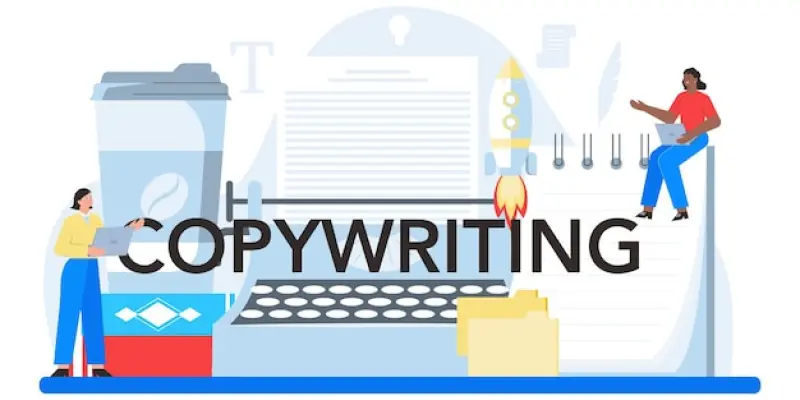In the rapidly evolving world of business-to-business (B2B) marketing, artificial intelligence (AI) has become an indispensable tool, transforming various aspects of the industry. Its ability to generate content quickly and efficiently has led to significant shifts in copywriting practices, prompting discussions about whether AI can fully replace the human touch in crafting B2B messages. While AI promises streamlined and cost-effective solutions, the nuanced demands of effective B2B communication may require more than algorithm-driven outputs. Fundamental aspects such as clarity, authenticity, and engagement often hinge on human intuition and creativity, suggesting a potential complementary relationship between AI and human skills rather than substitution. As AI technologies like ChatGPT continue to develop, marketers are faced with the challenge of integrating these tools without sacrificing the essential qualities that resonate with audiences.
AI’s Impact on Content Creation
The integration of AI into B2B copywriting offers considerable advantages, especially in terms of efficiency and scalability. AI tools can effortlessly generate large volumes of content, enabling marketers to extend their reach and maintain a consistent online presence. Advanced algorithms process data to produce personalized messages that cater to specific target markets, enhancing audience engagement. These developments offer substantial benefits, as businesses can deliver timely and relevant content across numerous digital platforms. However, relying solely on AI-produced text can raise concerns regarding accuracy and originality. Despite AI’s capacity for rapid content creation, maintaining factual integrity and stimulating genuine interest remains difficult without human oversight. The human element in editing and strategizing ensures that AI-generated material communicates the brand’s message accurately and effectively, highlighting the collaboration necessary for optimal outcomes.
Balancing Clarity and Complexity
One major challenge in B2B copywriting is balancing clarity with the richness of content. AI tends to prioritize simplicity, often presenting information in a straightforward manner deemed plausible for readers. While this trait can enhance readability, it poses risks for complex industries where intricate details are imperative for customer understanding—such as the regulations in safety-critical sectors. AI-generated content might inadvertently simplify or even misrepresent crucial information. Here, human expertise becomes crucial, adding depth and accuracy to the narratives. According to psychologist Daniel Oppenheimer’s study, concise communication is often perceived as more intelligent than complex language. Thus, clarity should be utilized not merely as simplification but as a differential strategy that strengthens the brand’s voice, ensuring that it stands out amidst cluttered market communications.
The Role of Human Insight
Despite AI’s advancement, the authenticity and emotional resonance of human-created content remain irreplaceable in crafting storytelling narratives that engage B2B audiences. AI lacks the ability to truly understand the cultural nuances and emotional contexts of its audience. This understanding is entirely human, requiring a genuine appraisal of specific situations that algorithms cannot yet replicate. As AI becomes more prevalent, the necessity for combining its analytical precision with the empathetic insight of experienced writers becomes more evident. This synergy enhances both the emotional appeal and factual credibility of content, aligning it with audience expectations. Incorporating human inputs ensures that messaging resonates genuinely, compromising neither detail nor emotional engagement. Marketers who leverage human creativity alongside machine learning enhance their storytelling ability, establishing deeper connections with their customers.
Future Potential of AI in B2B Marketing
Artificial Intelligence Optimization (AIO) emerges as a strategy where marketers optimize content for favorable AI interaction, similar to Search Engine Optimization. This practice reflects the industry’s adaptation to machine interpretation, guiding the marketing narrative smartly. Nevertheless, reliability in AI interpretation remains complex, as algorithms inherently aim to sound convincing rather than restoring precision to details. Therefore, the pursuit of improving AIO showcases the ongoing need to develop strategies that work within AI frameworks while retaining human nuance and input. The predicted resurgence in long-form content further illustrates the evolving landscape, with audiences seeking comprehensive analyses despite AI’s focus on summaries. As the future of B2B marketing unfolds, exploring ways to blend AI’s efficiency and human authenticity presents promising opportunities to enhance communication without losing key elements that foster lasting audience relationships.
Navigating the AI-Human Interface
Ultimately, while AI is revolutionizing content strategies in B2B marketing, it cannot fully replicate the depth offered by human-driven communication techniques. The creative insight of a skilled copywriter is indispensable for crafting authentic narratives that preserve originality and integrity. Organizations that successfully incorporate AI while emphasizing human touch will develop content that not only simplifies complex concepts but also maintains emotional nuance and connection. Marketers need to embrace the evolving dynamics by honing strategic skills and being adaptive to AI interventions. David McGuire’s proactive approach to blending practical training with strategic insight, as highlighted in recent discussions, provides an ideal model for marketers seeking to refine their skills in an AI-influenced environment. These strategies will prove vital in sustaining trust and engagement in B2B communications amidst increasingly automated processes.

